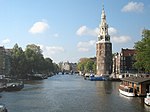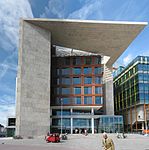De Appel

De Appel is a contemporary arts centre, located in Amsterdam. Since it was founded in 1975 by Wies Smals, the goal of De Appel is to function as a stage for research and presentation of visual arts. Exhibitions, publications and discursive events are the main activities of De Appel. In 1994, Saskia Bos established an intensive course, called 'The Curatorial Programme'. Over a period of eight months a selective group of five to six people are trained to become a curator. At the end of 2012, former director Ann Demeester initiated a new professional development programme in collaboration with The Fair Gallery: the Gallerist programme. This programme was the first practice-oriented educational course for (aspiring) gallery owners and (young) art professionals who wanted to deepen their curatorial and business competencies in the commercial segment of the art world. Wies Smals established de Appel in 1975. The director of De Appel in 2014 and 2015 was Lorenzo Benedetti. The current director is Monika Szewczyk.
Excerpt from the Wikipedia article De Appel (License: CC BY-SA 3.0, Authors, Images).De Appel
Prins Hendrikkade, Amsterdam Centrum
Geographical coordinates (GPS) Address Nearby Places Show on map
Geographical coordinates (GPS)
| Latitude | Longitude |
|---|---|
| N 52.3734 ° | E 4.9062 ° |
Address
Prins Hendrikkade 141A
1011 AS Amsterdam, Centrum
North Holland, Netherlands
Open on Google Maps









